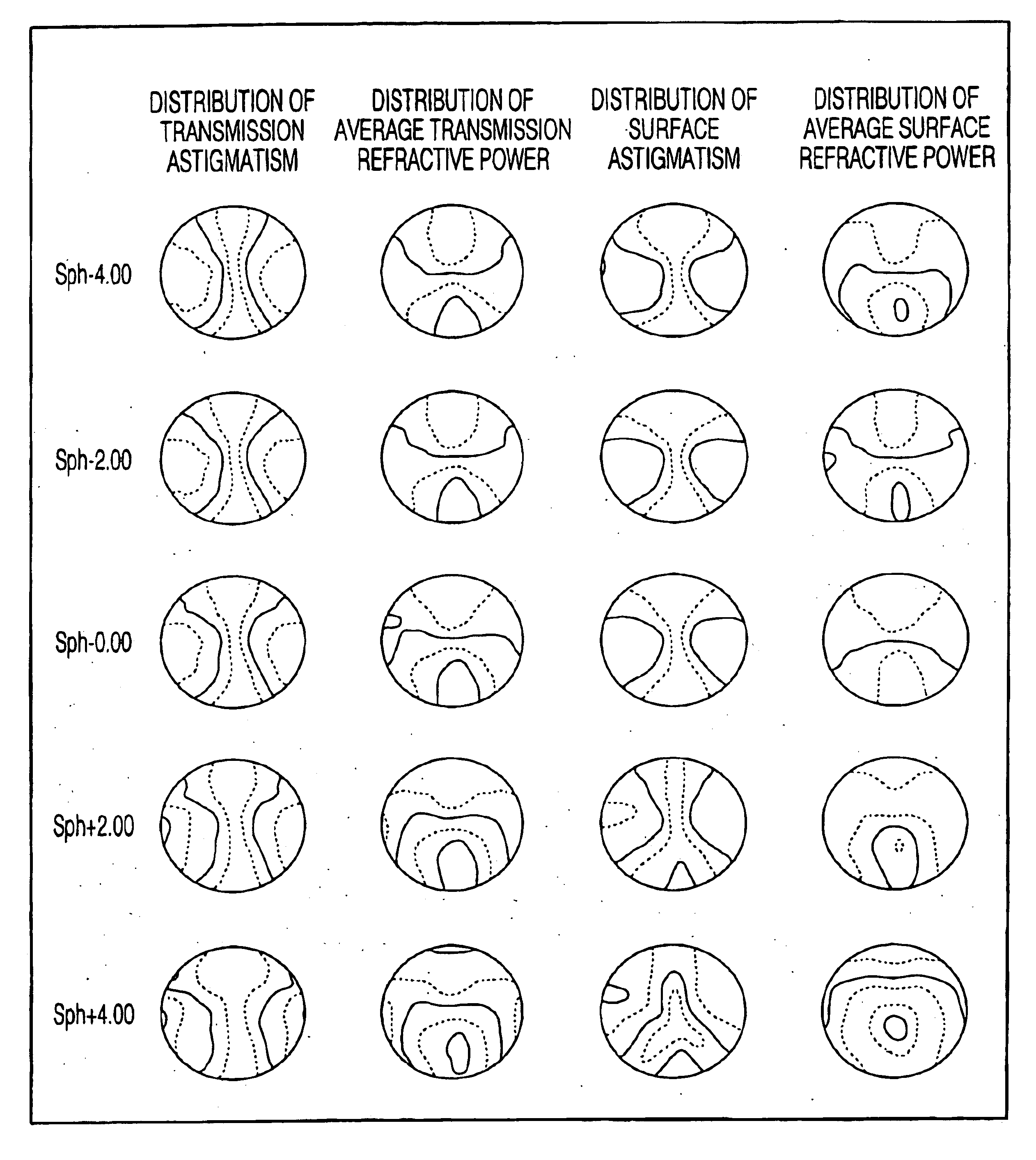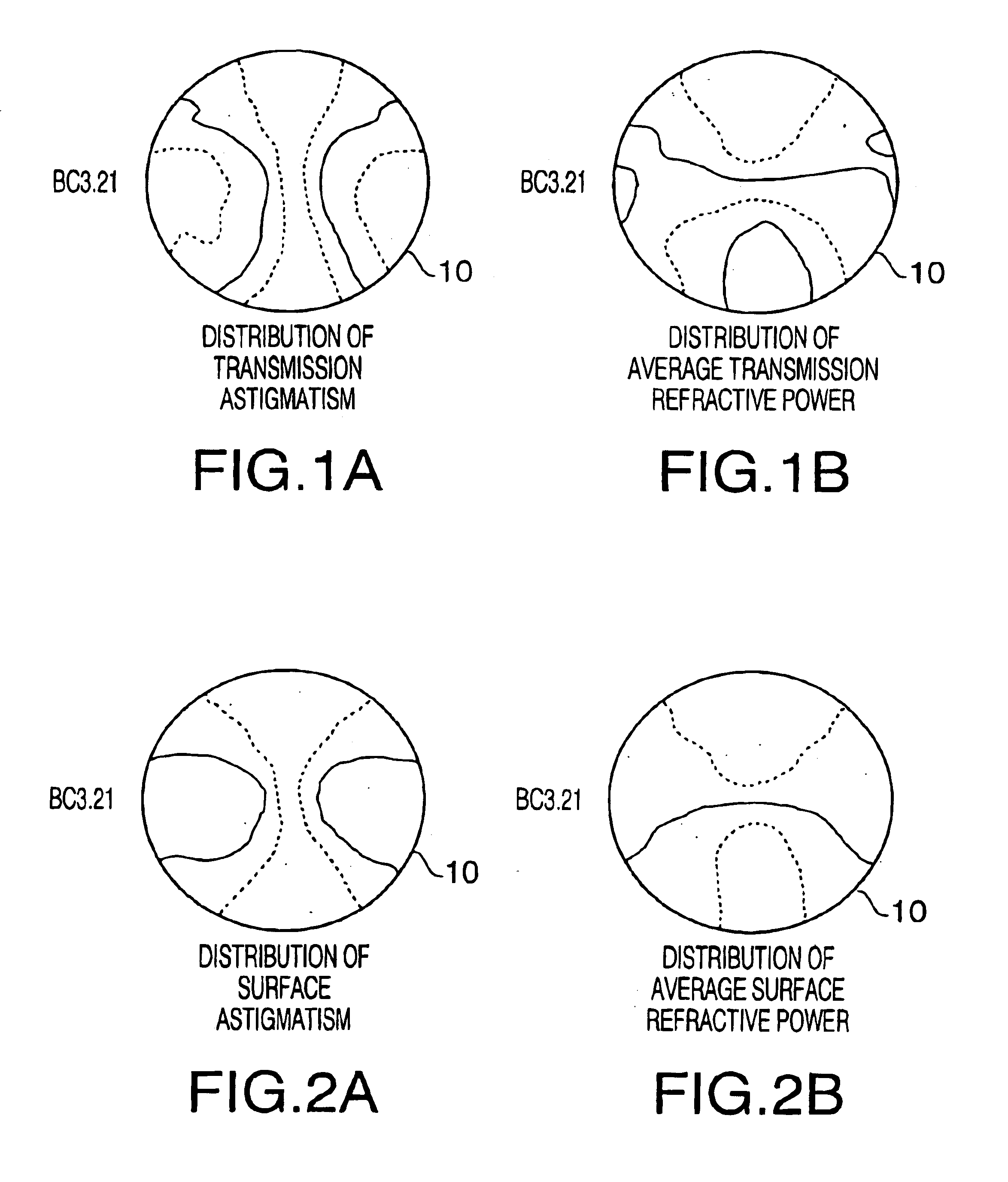Progressive power lens
a technology of progressive power and lens, applied in the field of progressive power lenses, can solve the problems of insufficient widening of the vision area, wearer's so-called swinging of images, uncomfortable feelings to wearers, etc., and achieve the effect of wide vision and sufficient reduction of transmission astigmatism of the lens
- Summary
- Abstract
- Description
- Claims
- Application Information
AI Technical Summary
Benefits of technology
Problems solved by technology
Method used
Image
Examples
first embodiment
[0082
[0083]FIGS. 1A and 1B show transmission performance of a progressive power lens 10 according to a first embodiment of the invention. FIG. 1A shows distribution of transmission astigmatism of the progressive power lens 10. FIG. 1B shows distribution of average transmission refractive power of the progressive power lens 10. In each of FIGS. 1A and 1B (and in each of the following distribution maps), an interval between adjacent contour lines corresponds to 0.5 (unit: D). The progressive spectacle lens 10 has a diameter of 60 mm.
[0084]FIGS. 2A and 2B show surface performance of the progressive power lens 10. FIGS. 2A and 2B respectively show distribution of surface astigmatism and distribution of average surface refractive power of the progressive power lens 10.
[0085]The transmission performance shown in FIGS. 1A and 1B is a target optical performance of a series of progressive power lenses according to the first embodiment of the invention. The series of progressive power lenses ...
second embodiment
[0119
[0120]FIGS. 13A and 13B respectively show distribution of transmission astigmatism and distribution of average transmission refractive power of a progressive power lens 20 according to a second embodiment of the invention. In each of FIGS. 13A and 13B (and in each of the following distribution maps), an interval between adjacent contour lines corresponds to 0.5 (unit: D). The progressive power lens 20 has a diameter of 60 mm.
[0121]FIGS. 14A and 14B respectively show distribution of surface astigmatism and distribution of average surface refractive power of the progressive power lens 20.
[0122]The transmission performance shown in FIGS. 13A and 13B is a target optical performance of a series of progressive power lenses according to the second embodiment of the invention. The series of progressive power lenses is designed to attain the transmission performance shown in FIGS. 13A and 13B.
[0123]The progressive power lens 20, a so-called progressive power lens for short distance, has...
PUM
 Login to View More
Login to View More Abstract
Description
Claims
Application Information
 Login to View More
Login to View More - R&D
- Intellectual Property
- Life Sciences
- Materials
- Tech Scout
- Unparalleled Data Quality
- Higher Quality Content
- 60% Fewer Hallucinations
Browse by: Latest US Patents, China's latest patents, Technical Efficacy Thesaurus, Application Domain, Technology Topic, Popular Technical Reports.
© 2025 PatSnap. All rights reserved.Legal|Privacy policy|Modern Slavery Act Transparency Statement|Sitemap|About US| Contact US: help@patsnap.com



